Over 400 Painted Terrapin Eggs Secured in Nest Patrol in 2017
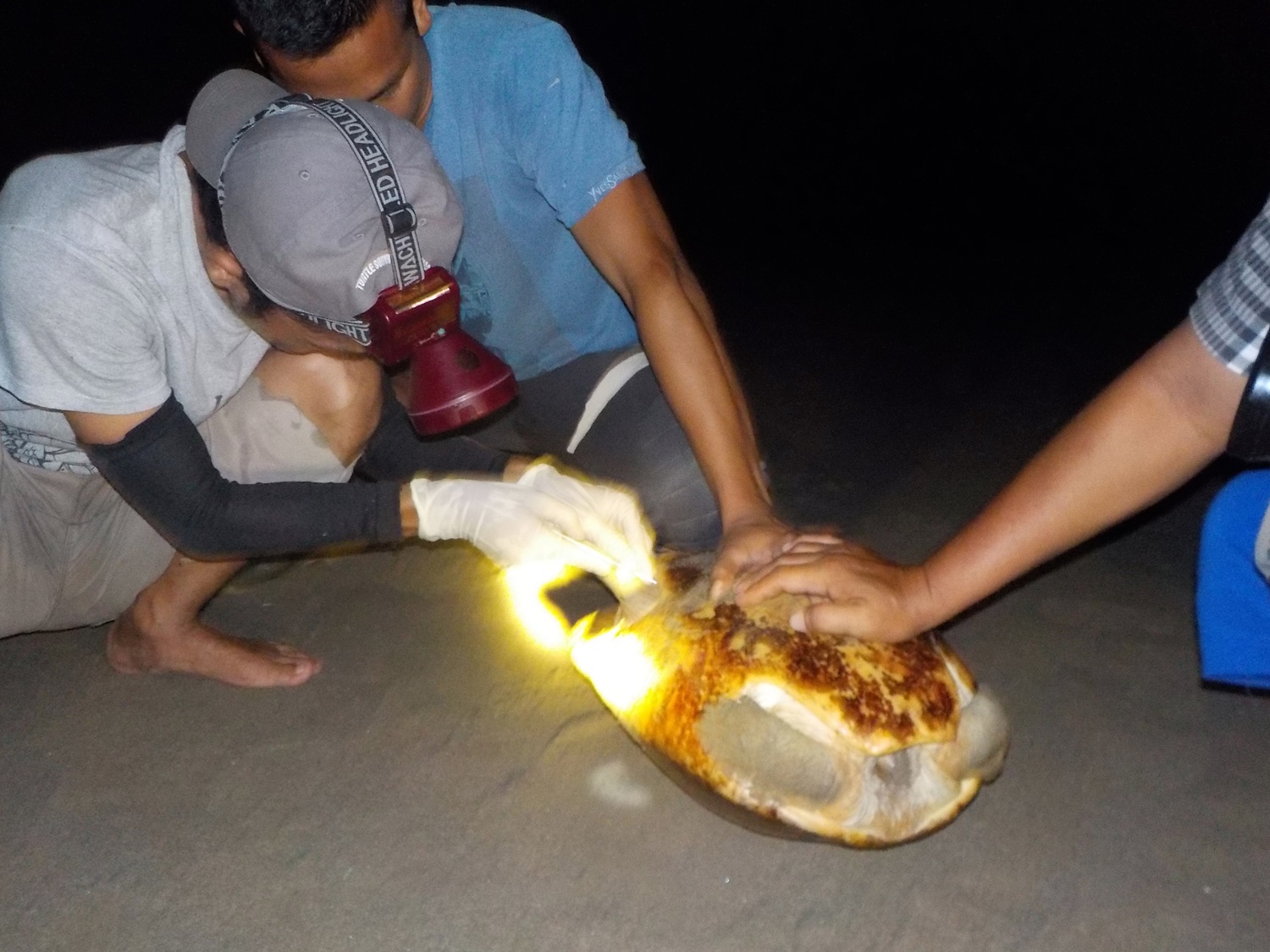
Totally, 407 eggs from 25 nests have been secured and are currently incubated at in situ hatcheries, located on the nesting beach, in Aceh Tamiang, Aceh, Indonesia. Since December 2016, the team of Satucita Foundation and BKSDA (Agency of Natural Resources Conservation) Province Aceh have been patrolling the beach to secure the eggs from harvesting by some villagers and wild boar.
Although some villagers are still trying to harvest the eggs during the nesting season, the cases are declining. But, the threat from wild boar (Sus scrofa) is still the same. As of today, eggs of 4 nests had been eaten by wild boar before being found and secured by our team. When the nesting beach has about 3 km in distance, it seems impossible to fence along the beach to secure the eggs from wild boar disturbance. Therefore, the nest patrol must be conducted annually.

The eggs had been secured, and currently are incubated at in situ hatcheries that are built on the nesting beach. The hatchery is fenced by barbed wire to prevent it from wild boar disturbance. On hatchery, the nest temperature, sands moisture, air, and humidity temperature were recorded four times every day. We are estimating the eggs will be started to hatch in late March.
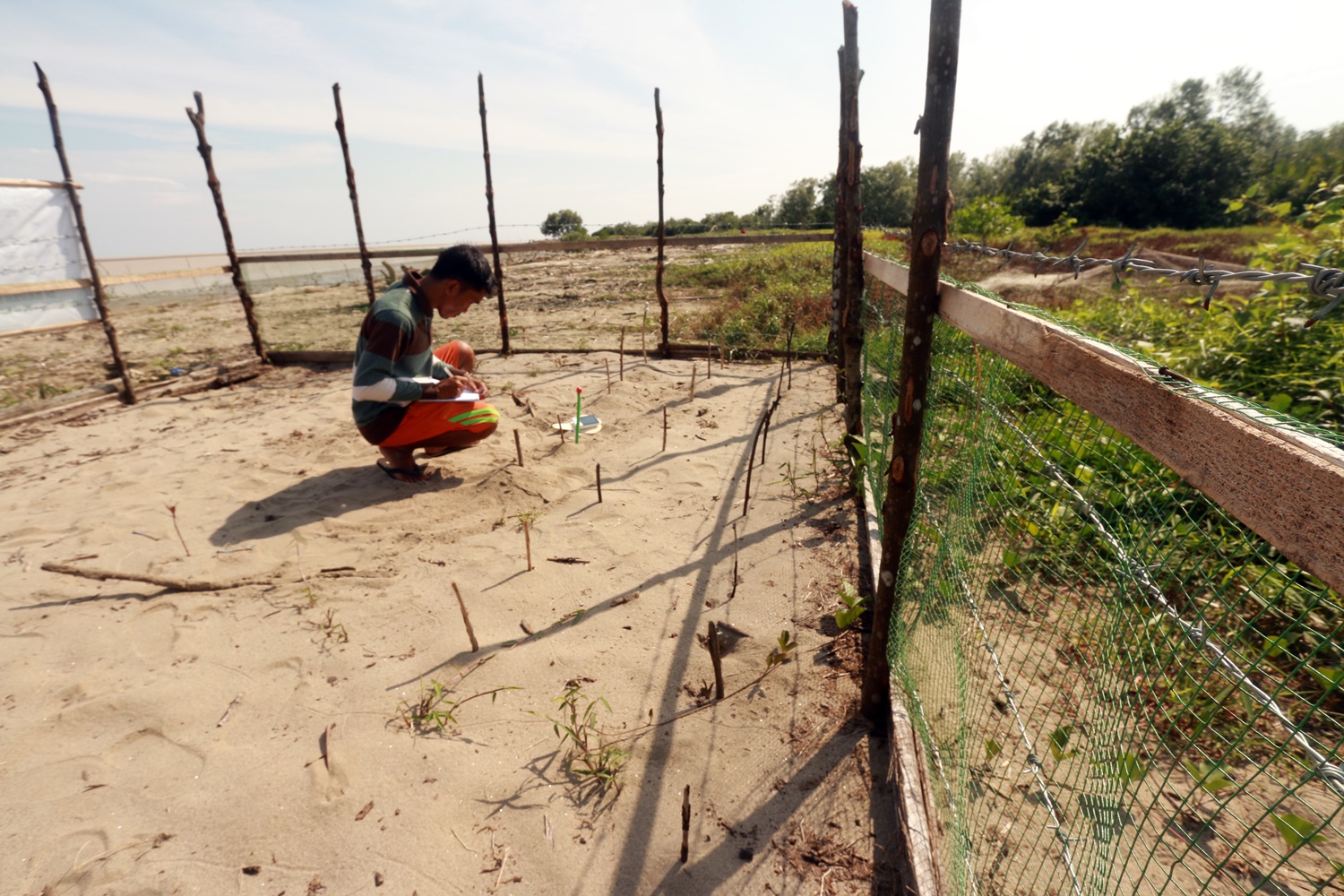
Our team was usually patrolling along the beach, about 6 km in distance, every night. On particular days, the patrol was conducted two times per night when the high tides occurred at about 4 to 5 am. During these days, the low tide still occurred from 7 to 8 pm. At this time, the emergence of the Painted Terrapin females for nesting on the beach was still possible. The movement of females for nesting is determined by tidal.

Nest characteristics – depth, width, sand moisture and temperature, air temperature, and humidity – are also measured. The female found was also injected with Pit Tags for future monitoring. Every nest found on the beach was moved and reburied on the hatchery that was situated about 30 meters from our nest patrol camp. The new nest has the same depth and width as the original nest. It is to ensure that there is no temperature and moisture difference between the original and new nest.
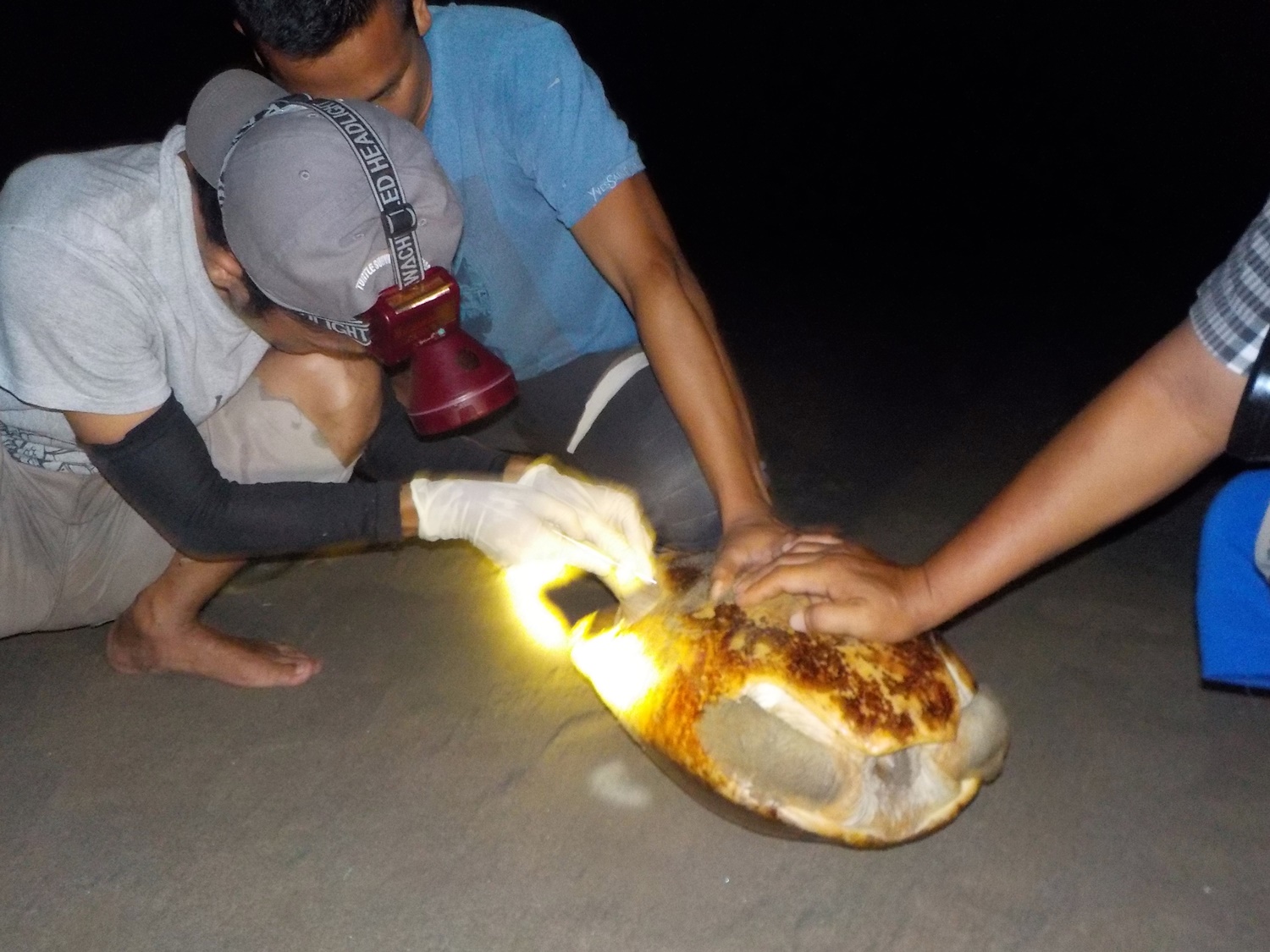
Causes of Declining
The total number of eggs secured this year is decreased compared to last year. The total number secured last year was 910 eggs of 52 nests. The decline is about 55 percent compared to last year.
That decline is very affected by some factors. First is coastal erosion. It is estimated that about fifty percent of beaches that usually become nesting sites for Painted Terrapin has lost due to erosion. This is the first time since the annual nest patrol has been conducted in 2010. This massive erosion is caused by a southeaster that makes heavy waves hit the beach, so the sandy beach was moving or lost.

The second is caused by shrimp trap. Reports from fishermen said that some adults of Painted Terrapin, male or female, were found dead because trapped in shrimp traps that were used by fishermen. Fishermen are using bananas or coconut as bait to capture shrimp. These baits are fed for Painted Terrapin.
The trap is installed on the river floor and checked by fishermen after a few hours. The trouble occurs when Painted Terrapin eats that bait and is trapped, so she/he is not able to swim to the surface to breathe. Therefore, it has made the number of adult females laying nests on the beach is declining.

The third is the massive amount of trash on the beach. The trash is dominated by logs, and twigs. These made the adult female face hard obstacles and difficulties to find a suitable place for digging a nest and laying eggs. Even, some females were sighted to return to the sea immediately, after they could not find an ideal place for digging and laying eggs.
If she could not find a suitable location for nesting, then the best possibility was she had to move to another beach for nesting. Some female footprints that had to return to the sea due to being hampered by logs or twigs were found on the beach. Unfortunately, our team would not be able to reach that beach because we had to cross the estuary by boat.
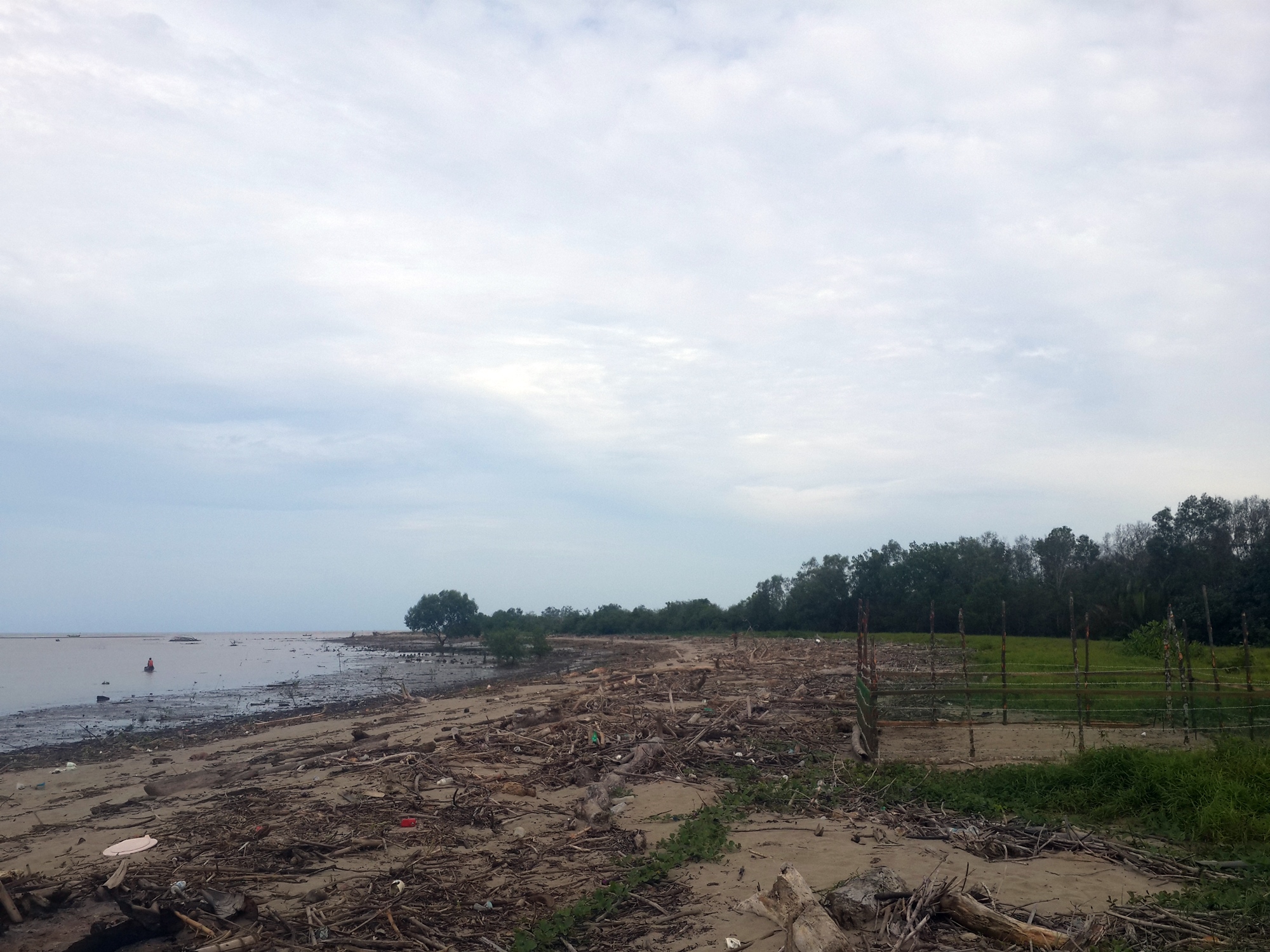
We would like to thank our partner Turtle Survival Alliance (TSA), Houston Zoo, and Chester Zoo to support our current conservation activities on the field. (Joko Guntoro)
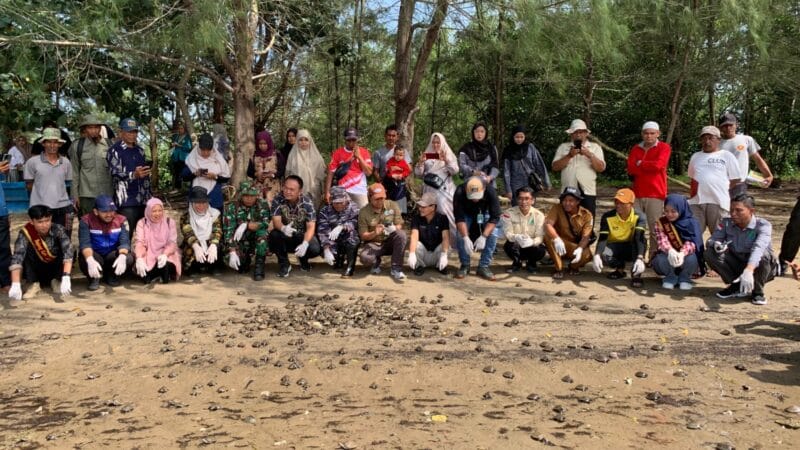
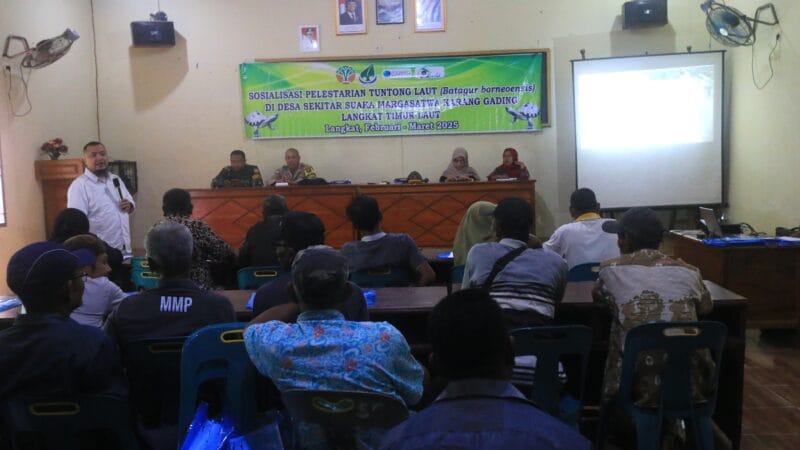
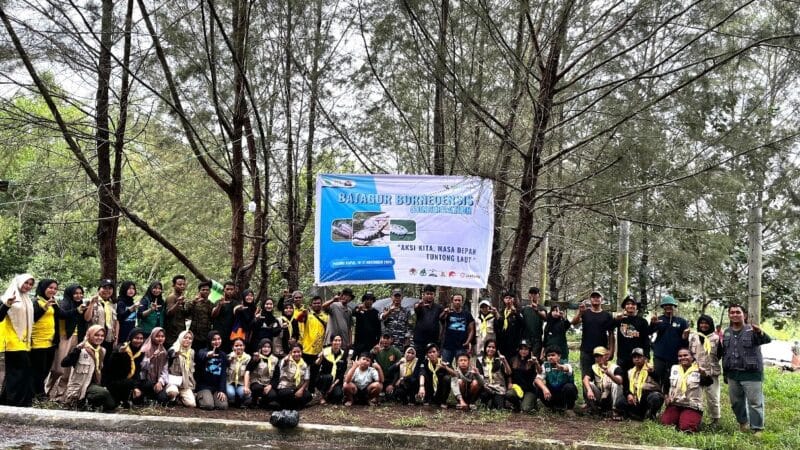
Thank you for your comment. If you do not mind, you can support our works. Thank you!